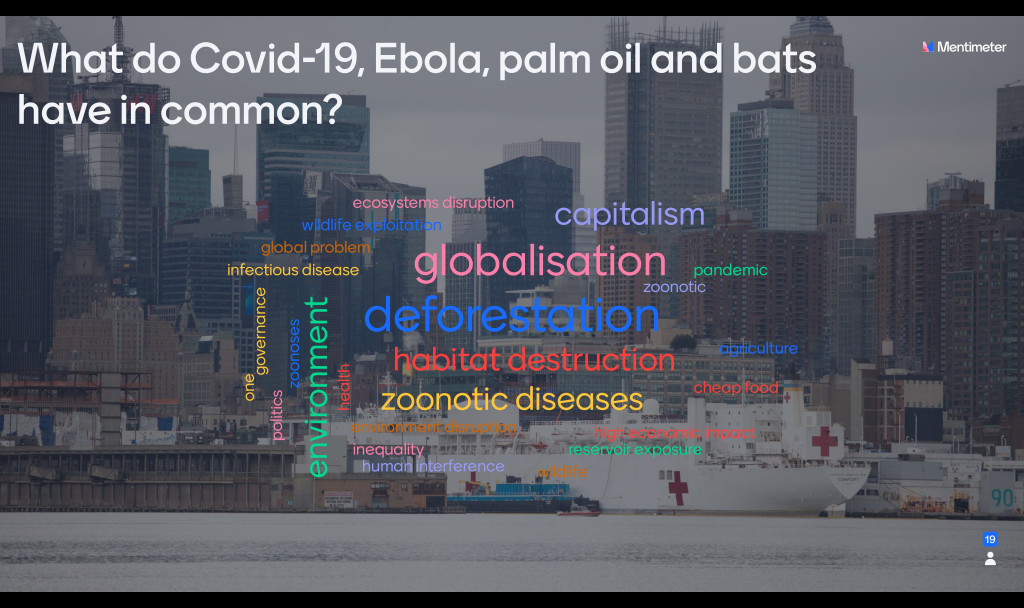Unit 4 - Market Liberalisation and Global Value Chains
| Site: | Interdisciplinary Hub Education Network |
| Course: | Political Economy of Antimicrobial Resistance and Infectious Diseases (2) |
| Book: | Unit 4 - Market Liberalisation and Global Value Chains |
| Printed by: | Guest user |
| Date: | Sunday, 24 November 2024, 1:21 PM |
Unit Introduction
Unit Title:
Unit 4 - Market Liberalisation and Global Value Chains
This unit was delivered by Dr. Mehroosh Tak, RVC
Unit Description
The lecture makes three key points. First, it starts with describing global circuits of capital in relation to husbandry and land use for livestock systems in order to explain the phenomenon of unequal ecological exchange. In this section, the idea of structural one health is introduced. Second, we discuss the role of economic liberalisation in creating the industrial livestock disease complex. Here the lecture highlights the role of international development aid and international finance institutions, such as the World Bank and International Monetary Funds, in promoting intensive farming systems. The case of Cameroon and the Bank’s policies for veterinary services is discussed. Third, in an attempt to move focus from the macro systems to meso, we discuss global value chains (GVC). Here four subpoints are highlighted – a) role of flex crops in industrial livestock complex, b) economies of scale in new production practices, c) “value addition” and d) rise of private quality standards. Special attention is paid to poultry systems in China and fish production in Tanzania. The lecture contributes to political economy research on the socio-economic underpinning of biological discourse.
Learning Objectives
By the end of the lecture the students will be able to:
- Draw linkages between global capital, livestock value chains and disease outbreaks
- Recognise the interconnections between economic liberalisation and global public health inequities
- Analyse the phenomenon of unequal ecological exchange for a country of their choice
- Describe global value chain (GVC) analysis approach
Core Reading Materials

Before we get started watch this short 3 minute video on how deforestation in Brazil is linked to British chicken
.

- Wallace, R. et al., 2020. COVID-19 and Circuits of Capital. Available at: https://monthlyreview.org/2020/05/01/covid-19-and-circuits-of-capital/ (link)
- Kwadwo Amankwah, Laurens Klerkx, Owuraku Sakyi-Dawson, Naaminong Karbo, Simon J. Oosting, Cees Leeuwis & Akke J. van der Zijpp (2014) Institutional dimensions of veterinary services reforms: responses to structural adjustment in Northern Ghana, International Journal of Agricultural Sustainability, 12:3, 296-315, DOI: 10.1080/14735903.2014.909635. Available at: https://www.researchgate.net/publication/263286398_Institutional_dimensions_of_veterinary_services_reforms_responses_to_structural_adjustment_in_Northern_Ghana (link)
- Kaplinsky, R and M. Morris (2000), A Handbook for Value Chain Research, IDRC http://asiandrivers.open.ac.uk/documents/Value_chain_Handbook_RKMM_Nov_2001.pdf - Chapters 1, 2 and 3, pages 1-22.
Additional Reading

- Luke Bergmann & Mollie Holmberg (2016) Land in Motion, Annals of the American Association of Geographers, 106:4, 932-956, DOI: 10.1080/24694452.2016.1145537. Available at: https://ihen.onehealthpoultry.org/pluginfile.php/2137/mod_book/chapter/788/Bergmann%20and%20Holmberg%202016.pdf (link)
- Wallace et al, 2015, The dawn of Structural One Health: A new science tracking disease emergence along circuits of capital, Social Science & Medicine Volume 129, March 2015, Pages 68-77. Available at: https://www.sciencedirect.com/science/article/pii/S0277953614006145?casa_token=KA9x4bDTluEAAAAA:Kb67JOrqgg9rK0DHRZZ8DINUFuu8GJ6XbMgl7Aj7p9-zilCgJ3laNkiKV2RqdFoK2sayuHQl_R4 (link)
- *Gros, J.‐G. (1994), Of cattle, farmers, veterinarians and the World Bank: The political economy of veterinary services privatization in Cameroun. Public Admin. Dev., 14: 37-51. https://doi.org/10.1002/pad.4230140103 (link). (Institutional access required. Contact Adam for more information).
- Kentikelenis A, King L, McKee M, Stuckler D. The International Monetary Fund and the Ebola outbreak. Lancet Glob Health. 2015 Feb;3(2):e69-70. doi: 10.1016/S2214-109X(14)70377-8. Epub 2014 Dec 22. Erratum in: Lancet Glob Health. 2017 May;5(5):e488. PMID: 25540014. Available at: https://www.thelancet.com/journals/langlo/article/PIIS2214-109X(14)70377-8/fulltext (link)
- McCoy D, Kembhavi G, Patel J, Luintel A. The Bill & Melinda Gates Foundation's grant-making programme for global health. Lancet. 2009 May 9;373(9675):1645-53. doi: 10.1016/S0140-6736(09)60571-7. PMID: 19427959. Available at: http://citeseerx.ist.psu.edu/viewdoc/download?doi=10.1.1.519.6170&rep=rep1&type=pdf (link)
- Ahuja V. The economic rationale of public and private sector roles in the provision of animal health services. Rev Sci Tech. 2004 Apr;23(1):33-45; discussion 391-401. doi: 10.20506/rst.23.1.1464. PMID: 15200085. Available at: https://pdfs.semanticscholar.org/7e09/95d681899972bd3fa16683c8e63ec5e11481.pdf (link)
- Panagariya, A. (2005), Agricultural Liberalisation and the Least Developed Countries: Six Fallacies. World Economy, 28: 1277-1299. Available at: https://www.tcd.ie/Economics/staff/amtthews/FoodPolicy/CourseMaterials/Readings/Panagariya_%20LDCs.pdf (link)
- Brian Lander, Mindi Schneider and Katherine Brunson, 2020 A History of Pigs in China: From Curious Omnivores to Industrial Pork, The Journal of Asian Studies · July 2020. Available at: https://www.researchgate.net/publication/342735996_A_History_of_Pigs_in_China_From_Curious_Omnivores_to_Industrial_Pork (link)
- Peter Gibbon 2001, Upgrading Primary Production: A Global Commodity Chain Approach, World Development Volume 29, Issue 2, February 2001, Pages 345-363. Available at: http://directory.umm.ac.id/Data%20Elmu/jurnal/UVW/World%20Development/Vol29.Issue2.2001/1098.pdf (link)
- Martha Gning 2005, Navigating the Livestock Sector: Political economy of Livestock Policy in Burkina Faso, Pro-Poor Livestock Policy Initiative, FAO and Trade, Political Influence and Liberalization: Situating the Poor in the Political Economy of Livestock in Senegal. Available at: https://assets.publishing.service.gov.uk/media/57a08c5b40f0b652dd001298/PPLPIwp28.pdf (link)
- Gilbert C. (2008) ‘Value chain analysis and market power in commodity processing with application to the cocoa and coffee sectors’ in Commodity Market Review, Rome: FAO, pp. 5-34. Available at: https://core.ac.uk/download/pdf/6262879.pdf (link)
- Ponte, S., Kelling, I., Jespersen, K.S., Kruijssen, F. (2014), The Blue revolution in Asia: Upgrading and governance in aquaculture value chains, World Development, 64: 52-64. Available at: https://research-api.cbs.dk/ws/portalfiles/portal/46514494/stefano_ponte_the_blue_revolution_in_asia_postprint.pdf (link)
Alternative Readings

- Leigh Phillips, 2014, The Political Economy of Ebola, Jacobin Magazine, https://www.jacobinmag.com/2014/08/the-political-economy-of-ebola/ (link)
- Andrew Wasley, Alexandra Heal, 2 Jul 2020, Revealed: development banks funding industrial livestock farms around the world, The Guardian https://www.theguardian.com/environment/2020/jul/02/revealed-development-banks-funding-industrial-livestock-farms-around-the-world (link)
Lecture Slides
Here is the PowerPoint presentation for Unit 4 and the word cloud created in today's lecture.
